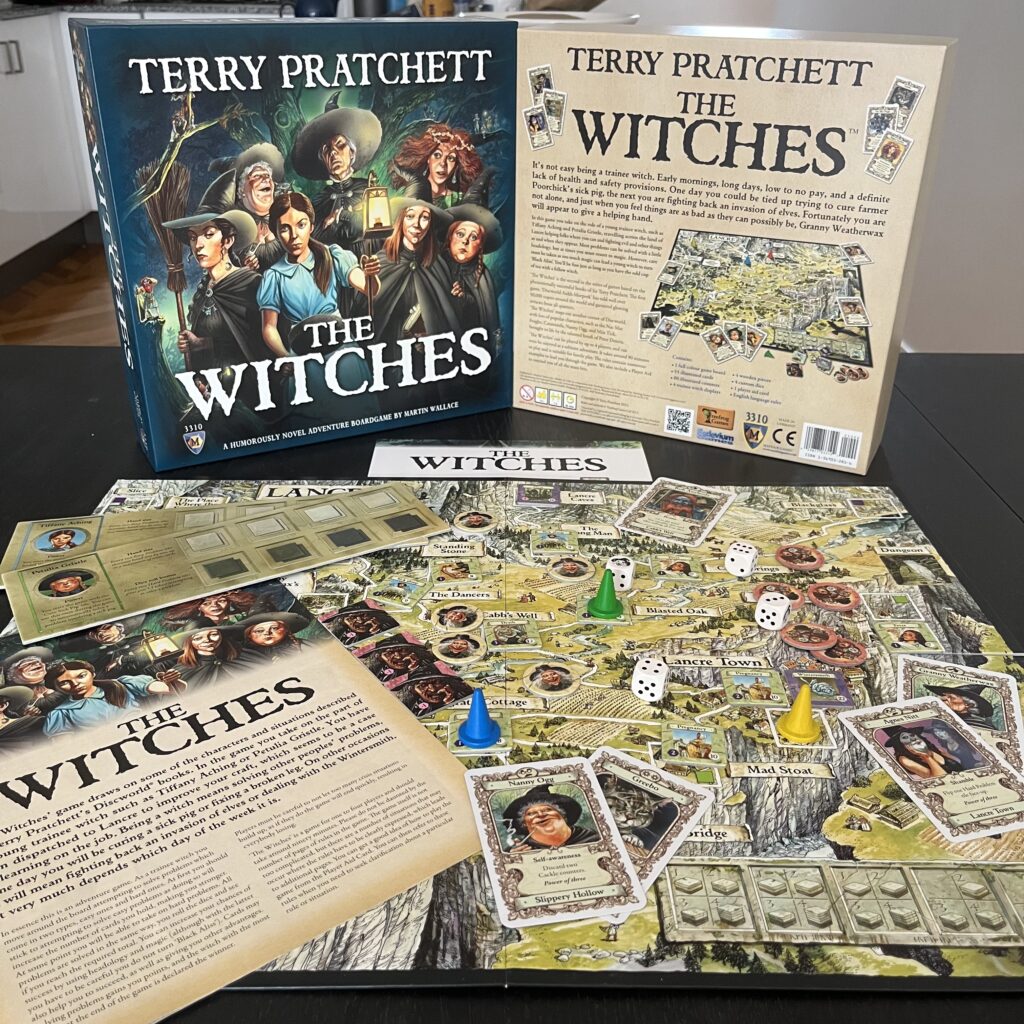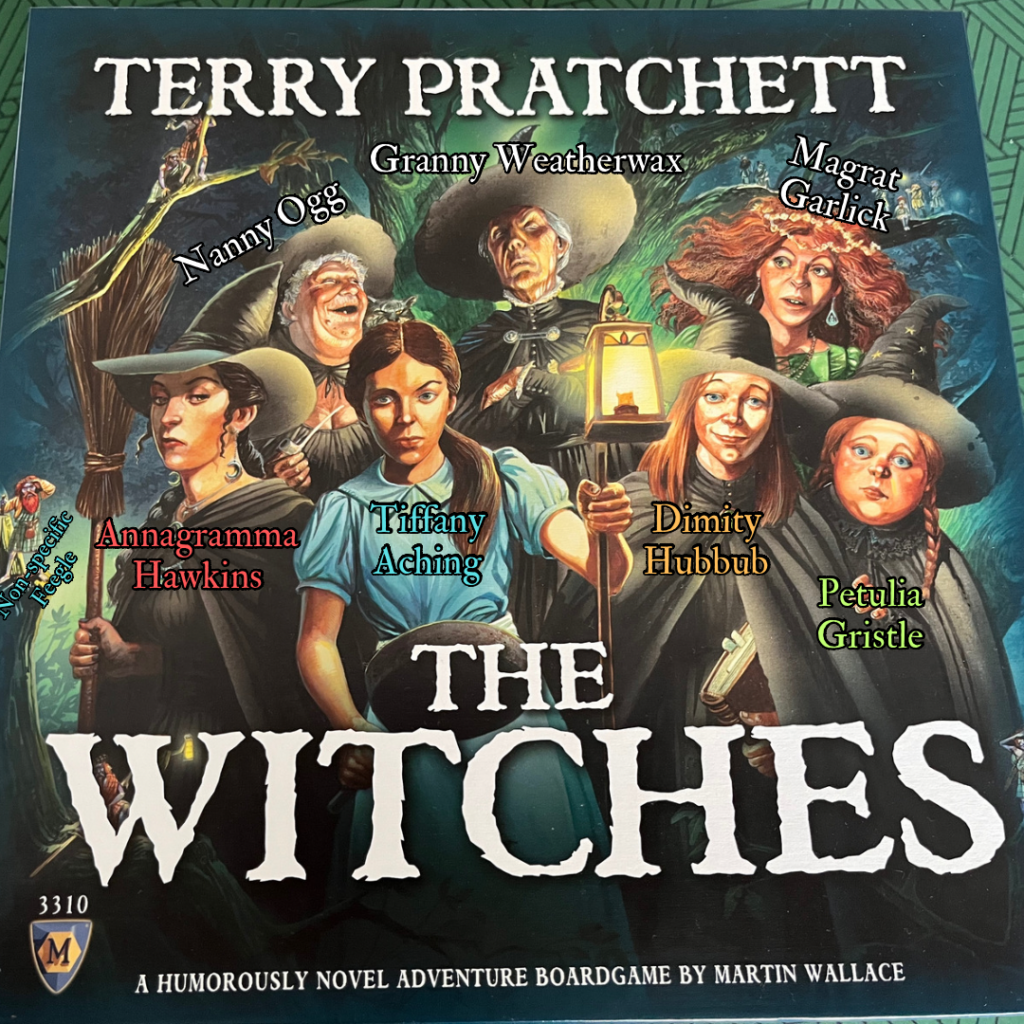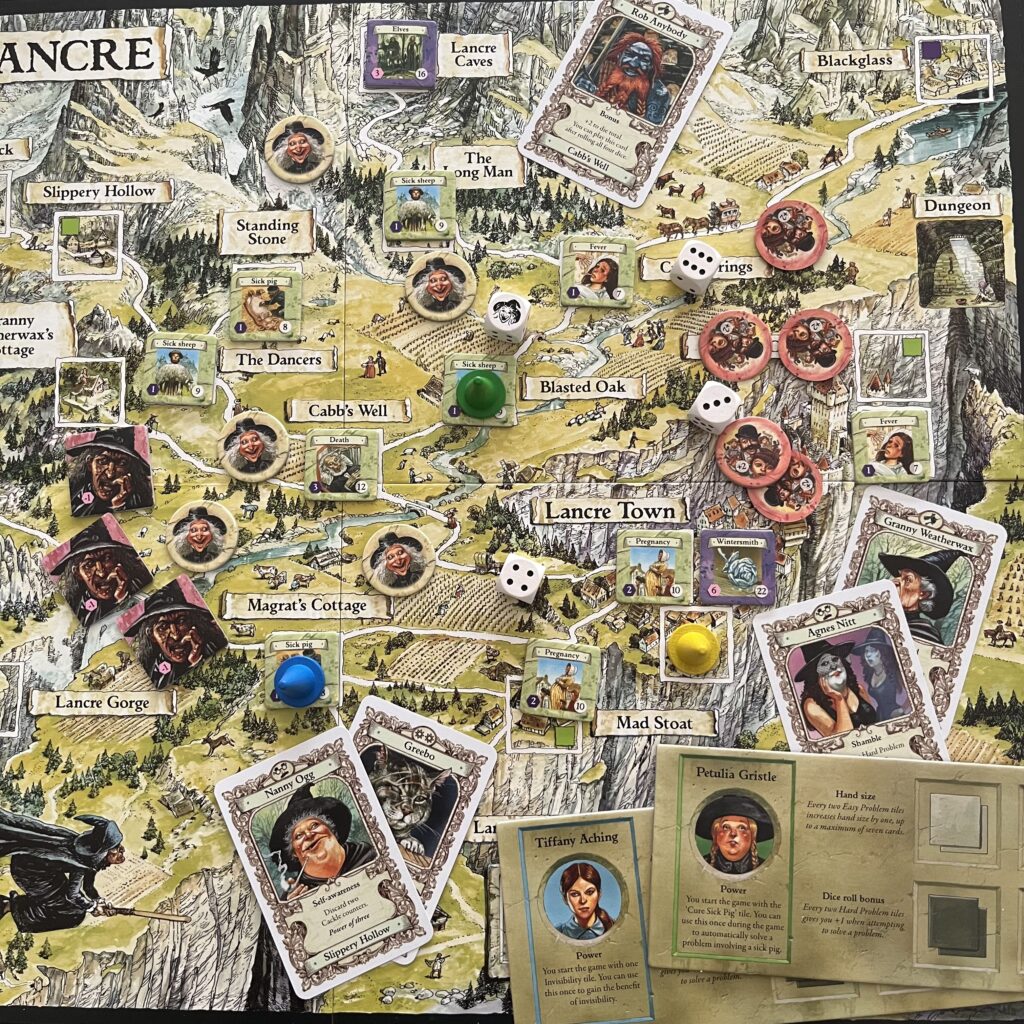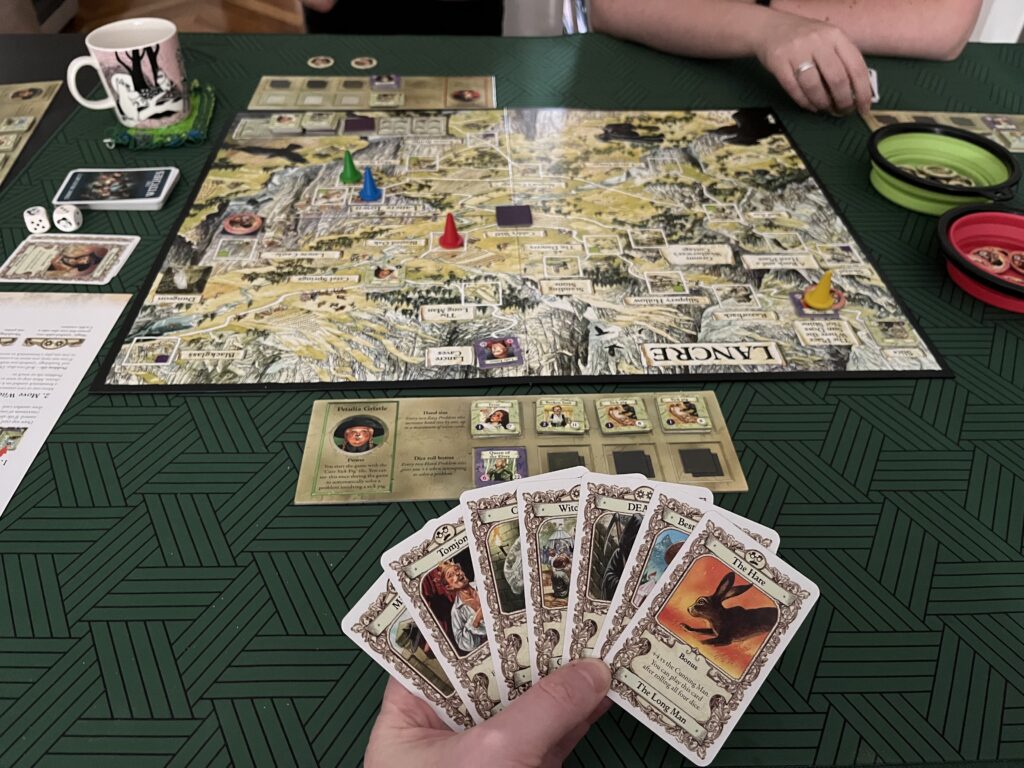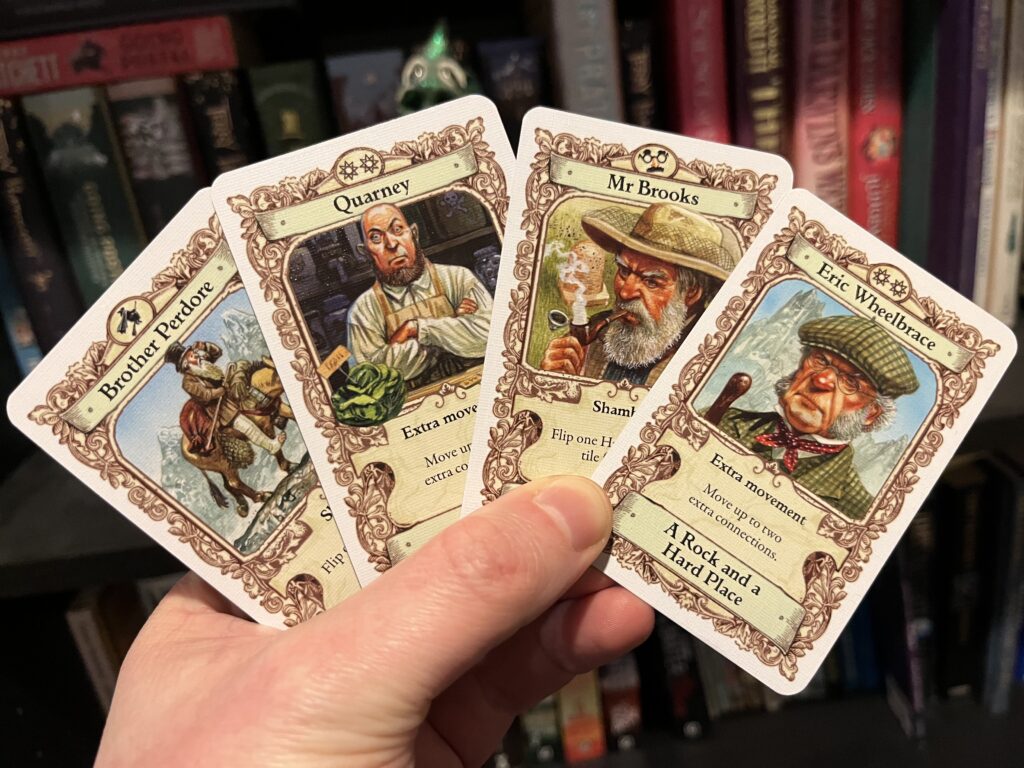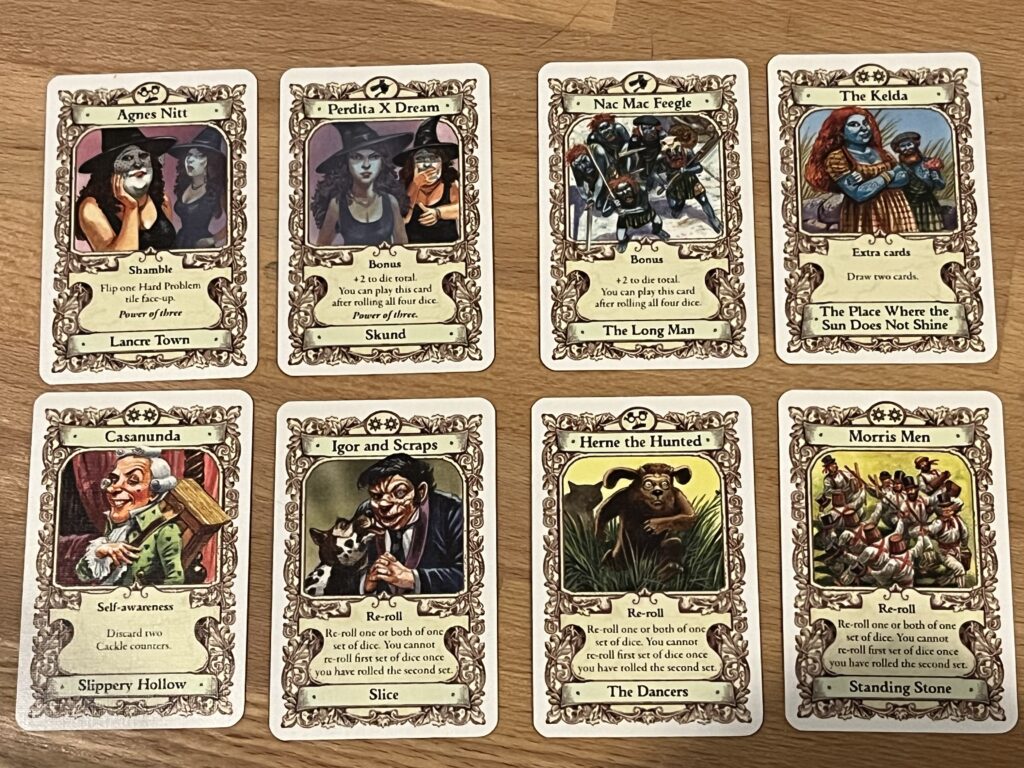#Pratchat32 – Meet the Feegles
Liz, Ben and librarian Meaghan Dew come down from the mountains to a land of sheep, chalk and tiny blue warriors, and meet the youngest witch ever, in Terry Pratchett’s 2003 Discworld for Younger Readers book, The Wee Free Men.
Nine-year-old farm girl Tiffany Aching lives on The Chalk, a lowland area famous for its sheep and…er…sheep products. It’s not famous for attacks from mythical river monsters, so when one turns up she lures it with her brother as bait and hits it over the head with a frying pan. Searching for answers, she meets the very real witch Miss Tick, and realises that’s what she wants to be. In her first truly witchy move, she disobeys Miss Tick’s advice and tries to take on the Queen of the Fairies, who has kidnapped her baby brother. Luckily she’s already met and impressed the Nac Mac Feegle – a clan of tiny blue “pictsies” with a love for fightin’, stealin’ and drinkin’…
After the end of the Witches series in Carpe Jugulum*, Pratchett launched a new protagonist destined to become one of his most beloved characters. Tiffany Aching is practical, serious, thoughtful and wilful, with a steely gaze and a mind so sharp she might cut someone else (she certainly knows which bit to hold onto). Pratchett weaves the story of a young girl stepping into some big – and tiny – shoes with themes of grief, family, community, belief and the stories we tell…oh, and a tiny blue and red whirlwind of swearing, violence and other Scottish stereotypes known as the Nac Mac Feegle.
Do these two things mesh well for you? Is this Tiffany’s finest hour, or just a taste of what’s to come for her? And was Granny Aching a witch, a shepherd, or something else entirely by the end? Use the hashtag #Pratchat32 on social media to join the conversation!
* Carpe Jugulum is coming soon(ish) to a Pratchat episode near you!
Podcast: Play in new window | Download (Duration: 2:19:47 — 64.4MB)
Guest Meaghan Dew is a librarian and podcaster. For around seven years, Meaghan hosted and produced the podcast for Australian arts and culture magazine Kill Your Darlings. Meaghan currently works as a librarian in Melbourne, and produces her library’s podcast program.
Ben was reading the The Illustrated Wee Free Men, the 2008 hardcover edition of the book with full-colour illustrations by artist Stephen Player – and a few extras from Terry. Player advises that the colours are off in the printed book, but you can see many of the original illustrations on his web site.
Next month we travel to an entirely different rural area of the Disc for more younger readers adventure, in 2000’s The Amazing Maurice and His Educated Rodents. We’ll be joined by writer and screenwriter Michelle Law! Get your questions in via the hashtag #Pratchat33 by June 20th 2020.
You’ll find the full notes and errata for this episode on our web site.
Want to help us get to the end of our six(ish) year mission and read every Pratchett book – and more? You can support us with a tip, or a subscription for as little as $2 a month, and that’s cuttin’ our own throats! See our Support Us page for details.

